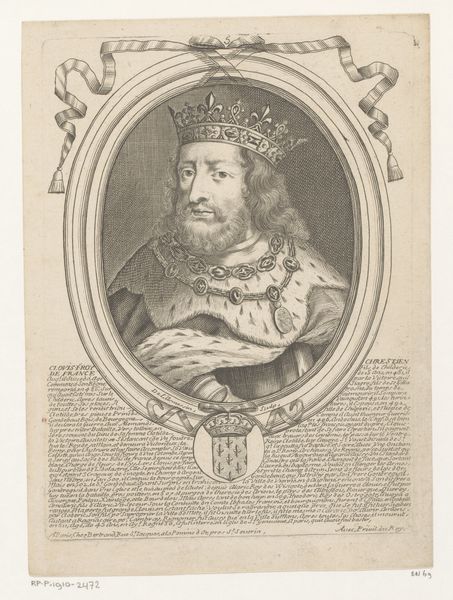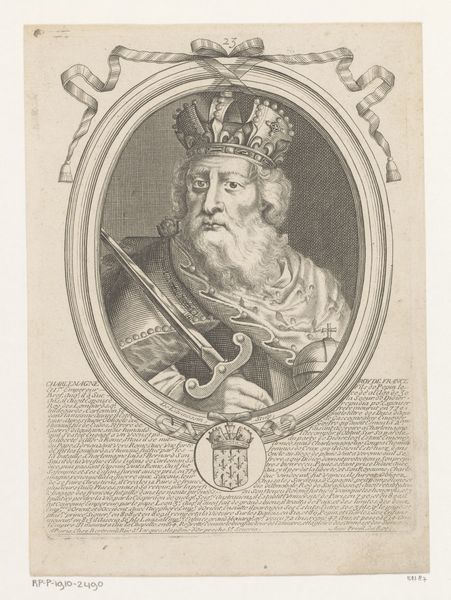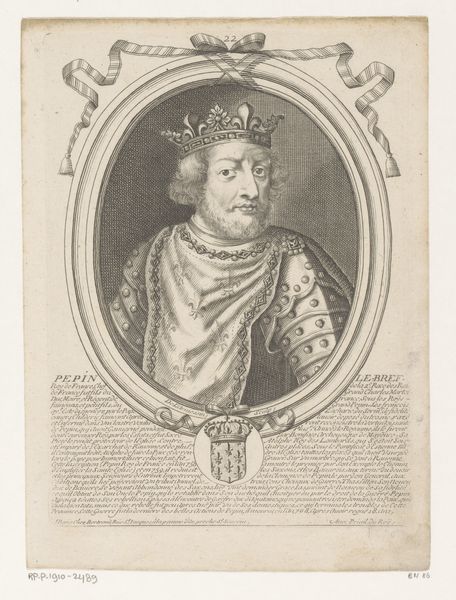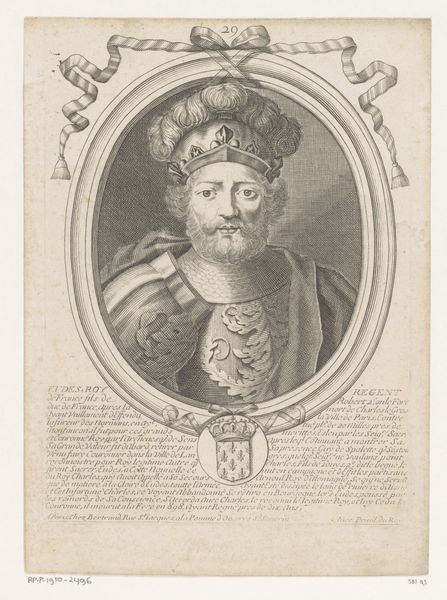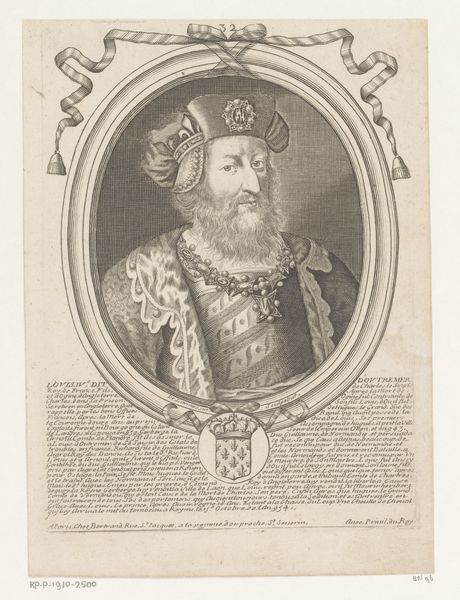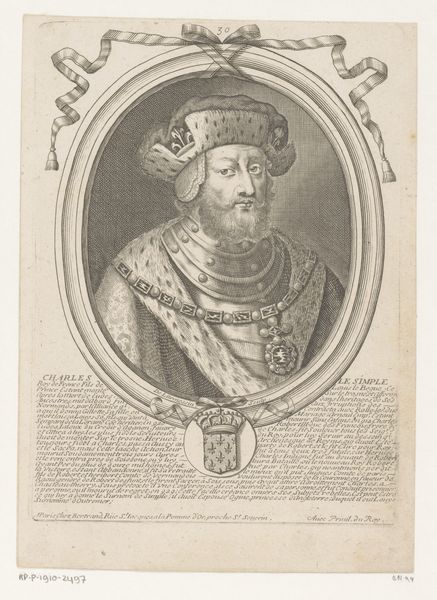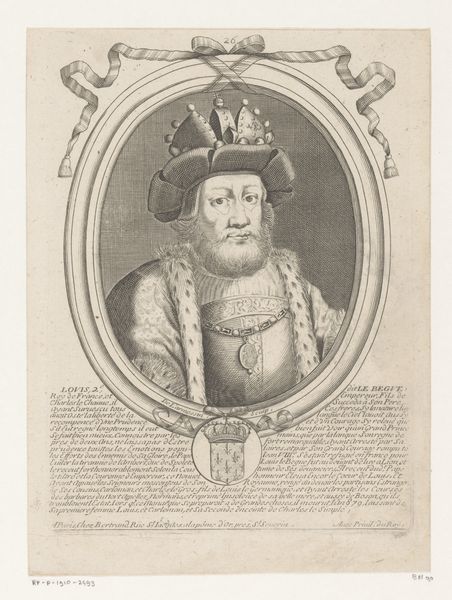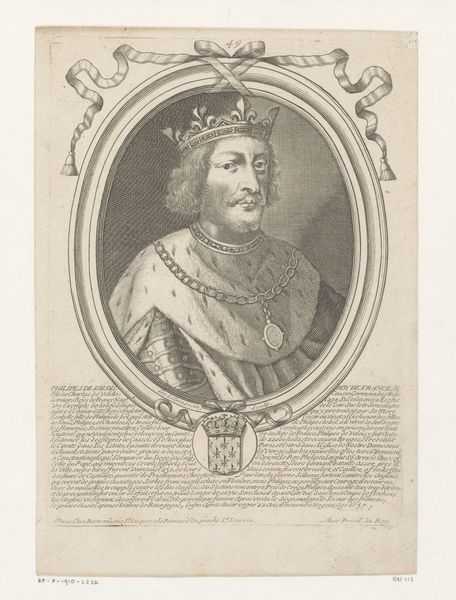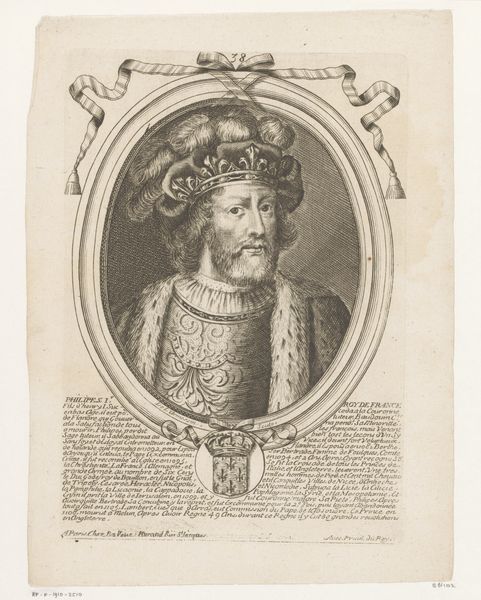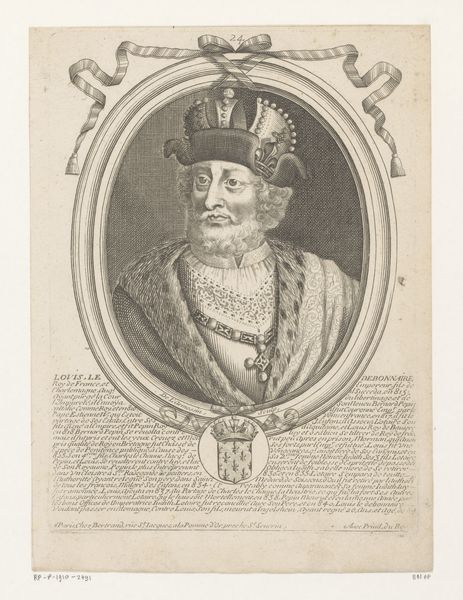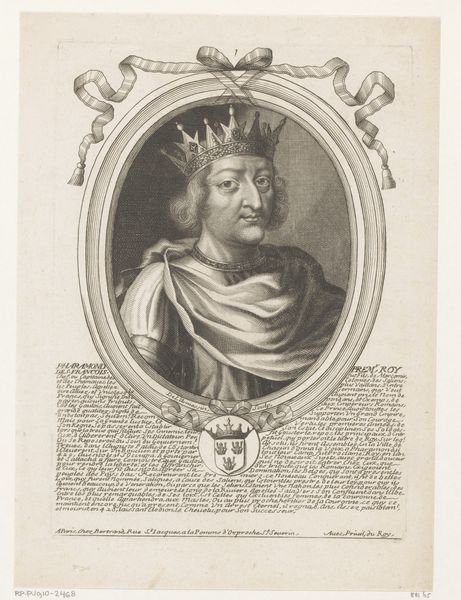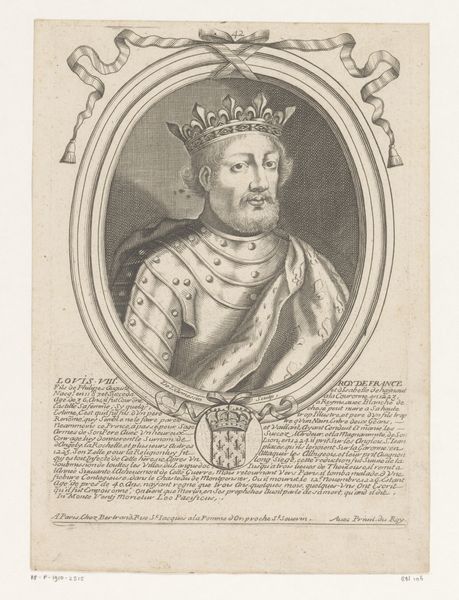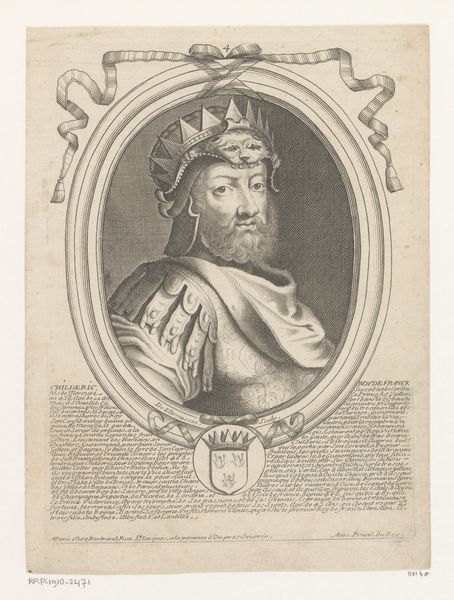
graphic-art, print, engraving
#
portrait
#
graphic-art
#
medieval
#
baroque
# print
#
old engraving style
#
figuration
#
line
#
history-painting
#
engraving
Dimensions: height 244 mm, width 176 mm
Copyright: Rijks Museum: Open Domain
Curator: Here we have a portrait of Clodion, King of France. Nicolas de Larmessin I created this engraving sometime between 1647 and 1678. It’s currently held in the Rijksmuseum. Editor: My first thought is that there is such an imposing presence. Despite being rendered in such delicate lines, his stare feels rather intense. It almost has a modern sensibility that belies the old engraving style. Curator: It's interesting that you say that. The intent behind imagery like this during the Baroque era was, to a great extent, propaganda. Think about the power and authority they are projecting. That determined so much of the choices behind the aesthetics, in terms of presentation and overall imagery. The figure, the text and ornamentation, serve to re-enforce a sense of regalness and, therefore, legitimacy. Editor: Exactly! Even down to the crown, that signals something. What could be missed from just looking at it, is the political undertones behind presenting such figures in a time when social constructs like race, identity and class were viewed quite differently than today. The power is performative in these portraits, right? What does this all mean within a patriarchal society where a leader needed to assert dominance? Curator: I think, more broadly, we can't look at pieces such as these without dissecting the sociopolitical frameworks of that period. Royalty, of course, wanted to construct very specific narratives, right? Who was in, and who was out. These portraits were, in essence, advertisements. Editor: So true. Thinking about today and how political images flood our feeds on social media, or on broadcast media; these have always served as propaganda, to assert a perspective. It's always useful to consider art in dialogue with the society that created it. It also opens a space for a more honest view about current realities, doesn't it? Curator: Precisely. And perhaps in thinking through that lens we might find different points of convergence between then and now.
Comments
No comments
Be the first to comment and join the conversation on the ultimate creative platform.
